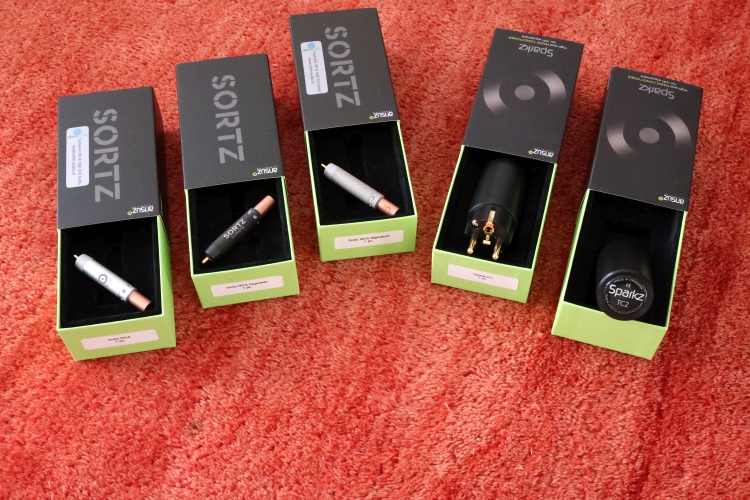
Listening part 1 – using Ansuz Mainz D2 and Mainz8 D2
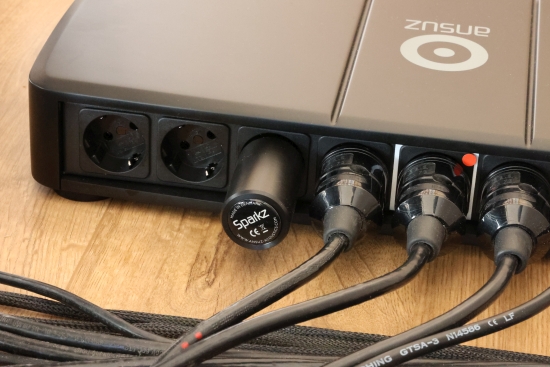
Sparkz
For both the Sparkz and the Sortz, I will start with the Ansuz-optimized setup using an Ansuz Mainz D2 power cable connected to one of the GigaWatt G-044 Schuko Wall Sockets feeding the Ansuz Mainz8 D2 power distributor into which I have plugged all the audio components that I use for this review. Meanwhile, all the other components are either powered off or on standby and not connected to the core system.
Upon adding one standard Sparkz connector to the Ansuz Mainz8, when listening for an increase in low-level detail, one can be forgiven expecting the sound to become crispier or more explicit. But that is not what the Sparkz do. What happens is that the ambiance, the atmosphere, is further enhanced, and made more intimate. The sound bubble more or less retains its size but becomes deeper and more densely filled. This is rather the inverse of “black holes” between the notes, an effect that is often described as a black or silent background, but which I feel is actually scraping information away. The effects that the Sparkz provides combine to enhance the intimacy and the organic, human aspect of the performance. That said, I can’t help notice that the Sparkz also introduces what I perceive as a slight damping of the transient peaks. This lowers the vibrance and excitement by a small margin which, for me and my system, is not ideal. With the Sparkz removed, the sound becomes relatively drier again, less dense and intimate, but also just that little bit more crispy and direct. I should add that the S-series Magicos, while revealing and very transparent, is also relatively friendly, and contrary to the brand’s general perception, even a little sweet on top.
While somewhat reluctantly preparing to try the TC2 Sparkz, I felt a dose of skepticism coming up but only for 3 seconds, as I soon heard that the TC2 improvements are very clearly audible. What the TC2 version achieves in terms of enhanced density and intimacy is very similar to what the regular version does, but with enhanced clarity, incisiveness, speed, and transient sharpness. Now, it must be said, there really is something to what the Sparkz can do! The enhanced atmosphere and intimacy quickly grow on you, making the removal of the Sparkz a sobering exercise. With the Sparkz TC2 removed again, the sound is more articulate but also drier and more matter-of-fact.
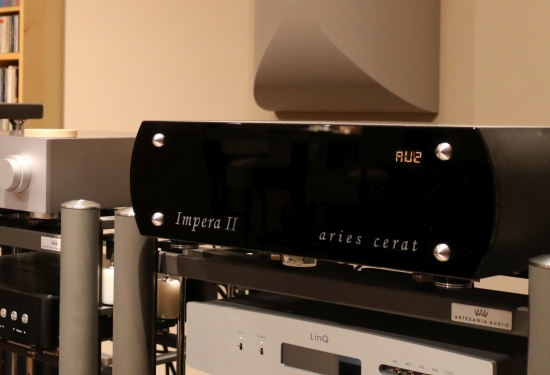
From CH to AC
Having heard the effects with the L1 preamp, I should assume that the Sparkz might respond differently in another system. Since I have the Aries Cerat Impera Reference preamp on loan, this was the perfect moment to change preamps. While the Impera is not strictly as highly resolving or as dead-on neutral as the L1, it throws an absolutely huge soundstage and has the kind of flow and richness in texture that transistor preamplifiers just seem incapable of achieving.
But although the Impera is an entirely different product, the effect on the music is very similar to what I heard with the L1 preamp. And with the Impera, too, the regular Sparkz has a big influence but the TC2 unit delivers a more exciting and more complete performance. However, this time, in addition to the aforementioned improvements in soundstage density and intimacy, the enhancements in soundstage depth become even more pronounced, either with the standard Sparkz or the Sparkz TC2.
But wait, what happens if you use more than one Sparkz?
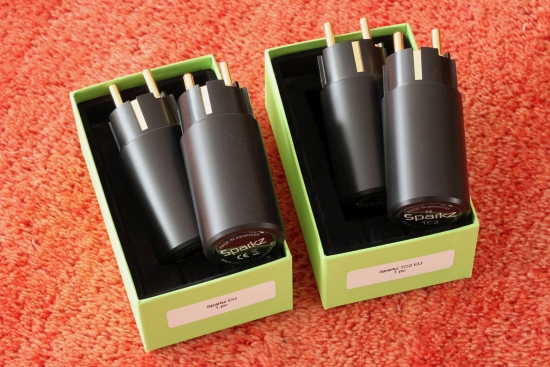
Doubling Up
Interestingly, instead of pulling the sound into the same direction just a little further, adding a second Sparkz actually provided a cleaner and tighter, and more exciting sound! And although the bass remains a little fuller/thicker (or less lean, if you will), and there is still a little bit of a damped feeling overall, the rhythmic expression, which for me is linked to the transient behavior, now feels more similar as to using no Sparkz. And the TC2 duo managed this while still delivering the advantages of the single Sparkz TC2.
When considering the addition of a single Sparkz, there is the consideration of smooth intimacy on the one hand versus direct expression on the other but with two Sparkz, this division is made less distinct. With certain recordings, the presence of the two TC2’s now actually heightened the overall realism of stand-up acoustic bass, piano, and guitar.
While I’m not usually a fan of any accessory that reduces the overall sense of attack, I also have to admit to finding the performance sans Sparkz emotionally less appealing, even when using the magnificent Aries Cerat preamp. Don’t you just love to hate this hobby?!
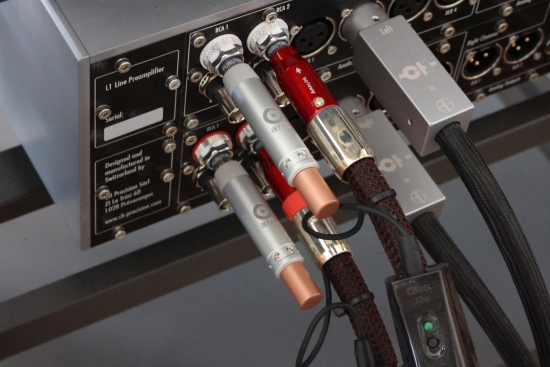
Sortz
Having removed the Sparkz, and starting with the standard Sortz, connected to two unused left and right inputs of the CH Precision L1 preamp, the soundstage depth doesn’t change as much as with the Sparkz, but the stage becomes wider and the ambiance now seems to extend more from the speakers toward me and surrounding me more. Meanwhile, something similar happens with the soundstage density and the overall intimacy of the music. More so than the Sparkz, the Sortz makes the music smoother and calmer, which in some respects is more pleasing, but the performance also feels less crispy and direct, less impactful and energetic. This is especially the case with predominantly rhythmic music that thrives on transient behavior. To be fair, it’s perhaps not so much the transient itself or even its speed but rather the shortness of it, that creates what I perceive as a more immediate feeling.
Let me share a short anecdote to illustrate the relativity of this. I have a close audiophile friend with whom I agree on just about everything, except on the matters of bass tightness and transient behavior. His main focal point is realism and he feels that my preferred sound across as staccato and overly emphasized on the transients, and thus, more hi-fi and less realistic. To me, however, it’s precisely the immediate transients that sound realistic. Many years ago, standing in front of a live band with a stand-up acoustic bass made me realize that my own B&W system did not at all resemble what I heard at that moment and that sparked my quest for a more ideal bass response. But therein lies the rub. No system can do it all, so which aspect of live performance is it that we focus on with our systems?
No matter where you stand, or how your system is comprised, the benefits of the Sortz are also very clear with music that relies more on harmonic textures and subtle reverbs. With moodier, slower, and more intimate music from artists like Diana Krall or Patricia Barber, the difference can be impressive. Here, the Sortz provides a sonic delivery that is spatially denser, with subtleties such as shakers and reverbs more deeply embedded into the ensemble but at the same time also very noticeably less factual and leading to an indescribably more relaxing yet still intriguing presentation that makes me put down the remote and just sink into the music.
Sure enough, even with the sympathetic kind of music, when I engage my critical listening mode, I still hear that percussive sounds have less immediacy to them, but there is no denying the increased amount of magic, in a way, reminding me of the beneficial effects, as well as the one less ideal attribute, of tube amplifiers.
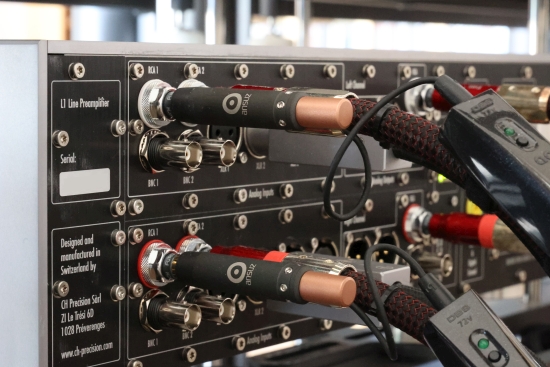
Stepping up to the Supreme Sortz, the sound instantly attains more grunt. The bass is more robust and the music more expressive as a result. However, I also feel that this version sounds a little darker than the standard Sortz. It can be argued that this is a result of the increased sonority but my feeling is that the treble is actually slightly toned down to create a fuller and even more intimate sonic picture. Stepping back confirmed that the standard Sortz does indeed sound more light-footed and while not necessarily more open in the upper-frequency range, it does come across as slightly airier from the upper midrange and up.
At the risk of referring to a classic component that no one remembers, I’d say that the Supreme Sortz is a bit like going from a Mark Levinson 390S CD player to a Wadia 861 CD player. Well, really on in terms of timbre, tonal balance, and grunt. Not so much in terms of fluidity, airiness, and finesse, because these aspects are actually more the realm of the Levinson, as the Wadia was never very airy or refined.
Based on its more robust balance, I personally prefer the more impactful-sounding Supreme version over the standard Sortz but I’ll be quick to add that there are no meaningful differences between the two versions in terms of soundstaging, fluidity, or flow.
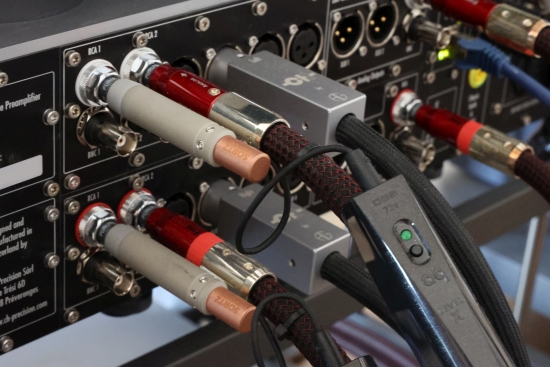
Finally, stepping up from the Supreme Sortz to the Signature Sortz, a portion of the Supreme’s grunt and robustness is retained, while the sound also gains the more linear and balanced approach from the regular Sortz. It’s not quite the same, though, as the regular version sounds leaner and overall less solid and impressive. Indeed, the range-topping version does indeed seem to perform best.
That said, I can imagine that personal preference will surely play a role. While I most definitely prefer the Supreme over the regular Sortz, I can see listeners opting for either the Supreme or the Signature. The former may sound a little dark in the upper midrange but it has an appealing balance, with its firm stature, its profound texturing, and its deep tonal saturation. The Signature provides a more even-handed sound which makes it feel less special but at the same time also makes it the most neutral and arguably best performer.
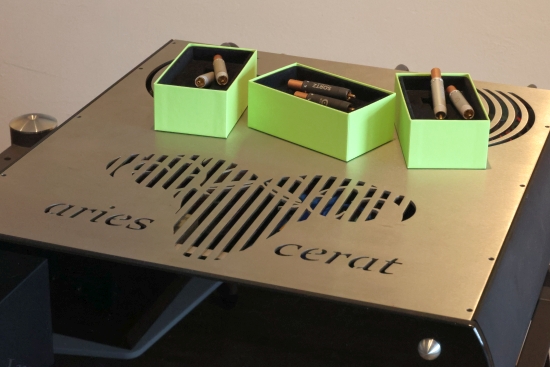
Sortz – Aries Cerat
Changing once again from the L1 to the Aries Cerat Impera Reference, I found that the effects of the three Sortz versions were similar but in trying the three versions in succession, remarkably, I do not hear much change in terms of soundstaging, either front to back or left to right. Also, while the sound does become calmer and more intimate with the addition of either of the three Sortz, the most notable change with this preamp is that of enhanced fluidity and refinement.
Once again, I favor the middle Sortz version, the Supreme because, while it may not be as linear as the Signature, it is the most expressive of the three while offering the same benefits in terms of spatiality and intimacy.
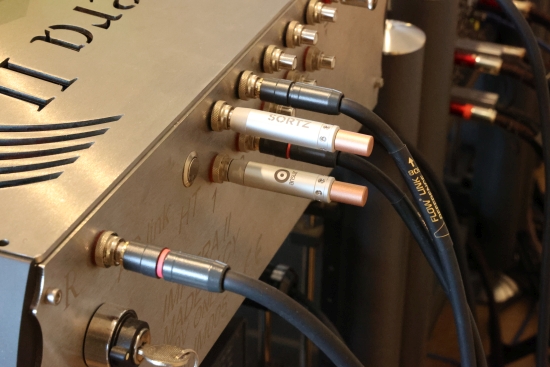
As with the L1, however, I also hear the softening of the transient peaks. And I must say that in this case, the benefits do not outweigh the relative disadvantages. But if you think about it, there’s logic to it. The CH L1 is a very clean-sounding pure transistor product while the Aries Cerat Impera is a full and rich-sounding pure tube product. Evidently, in my system at least, the former does well with the enhanced intimacy while the latter does not seem to be in need of further conditioning.
Furthermore, there is a chance that the Impera preamp’s design is different such that it is simply not in need of the sort of treatment that the Sortz provide. And lastly, it should be remembered that the power source is already receiving treatment inside of the Mainz8 Power Distributor.
With all that said, this is the ideal moment to change from the full Ansuz power source to my own modest power cables and distributors.
Next: Listening part 2 using my basic power setup
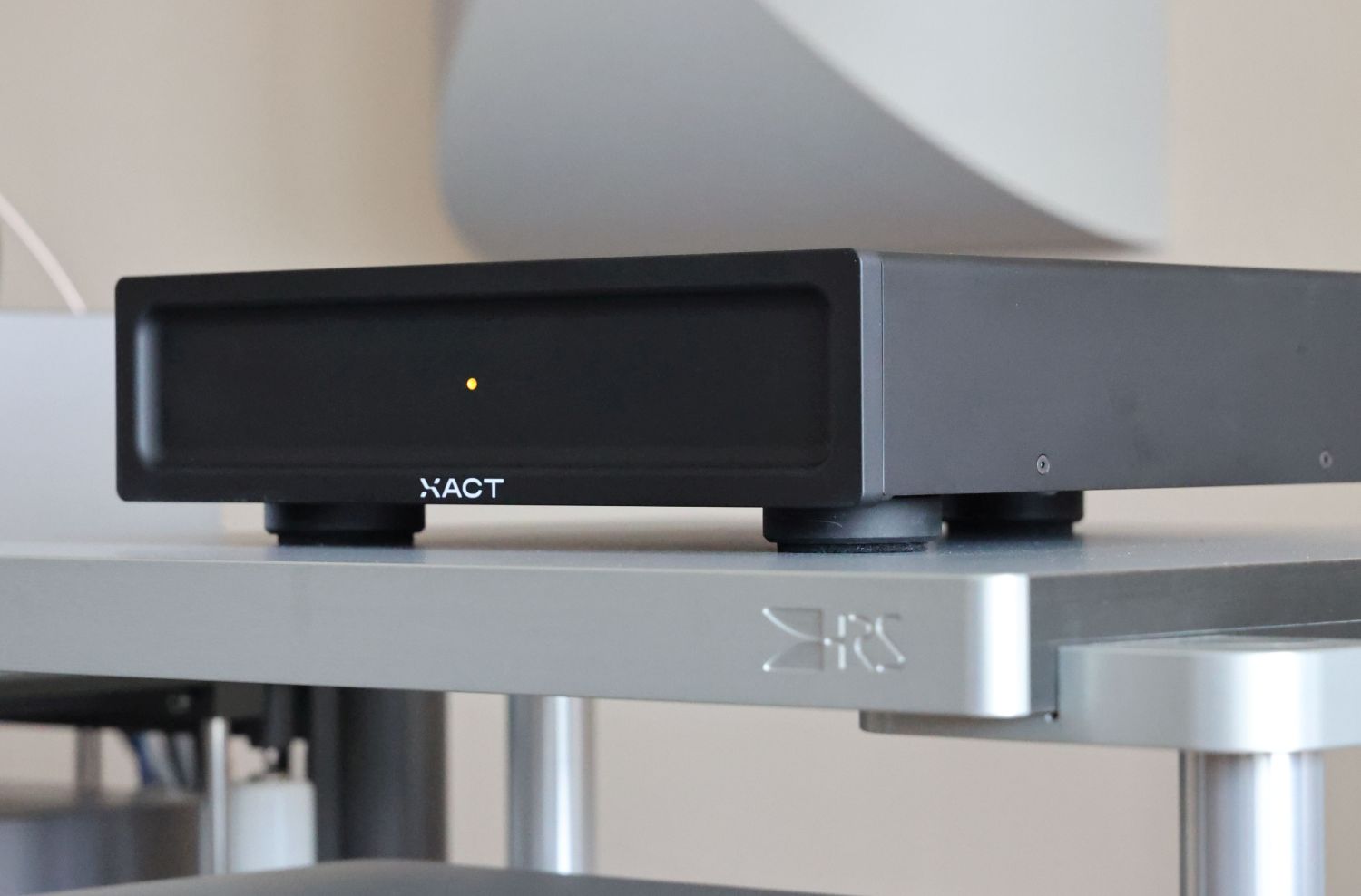
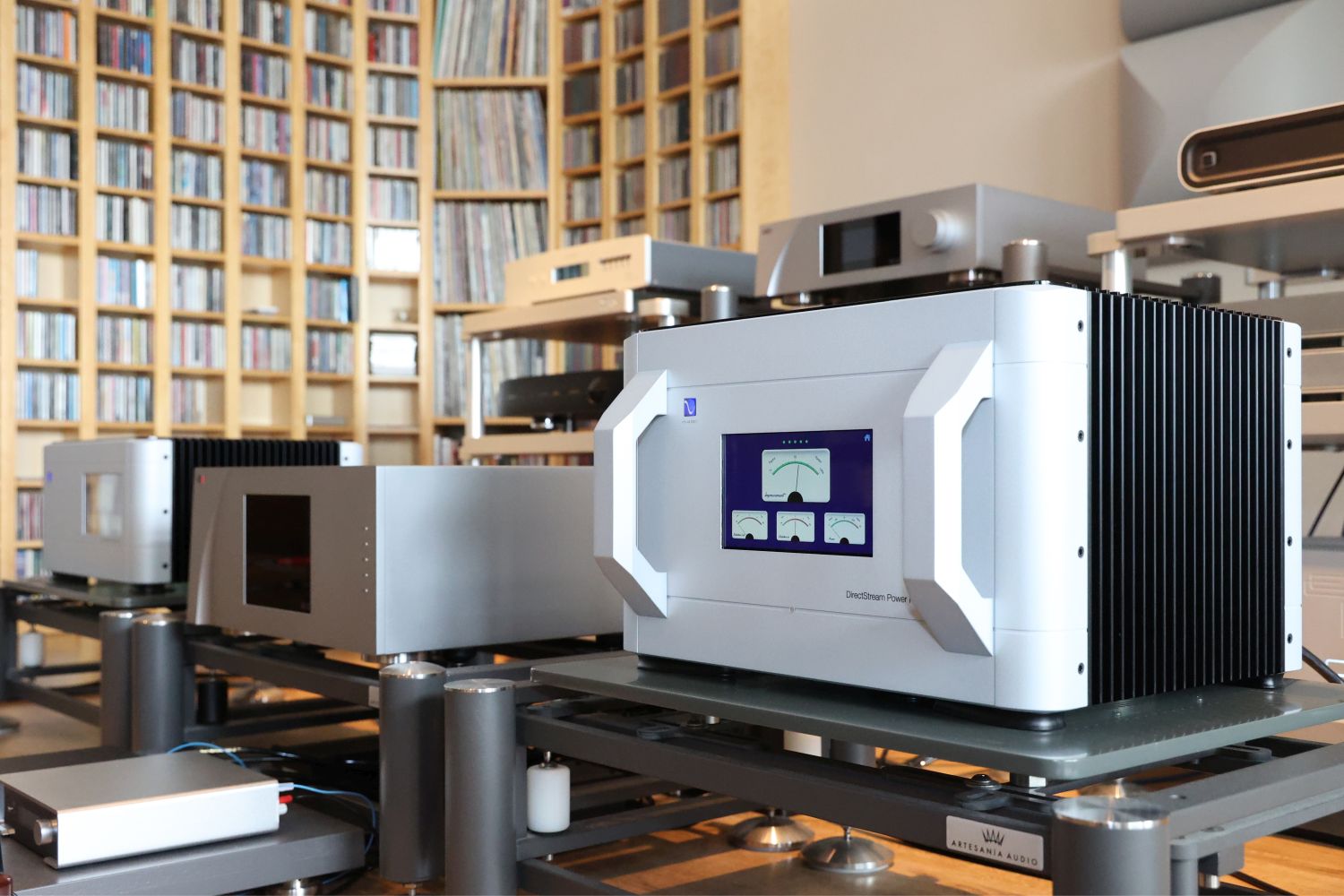

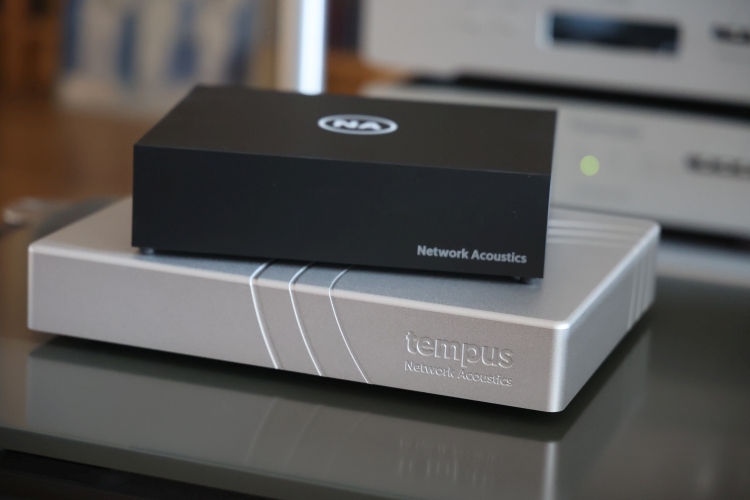

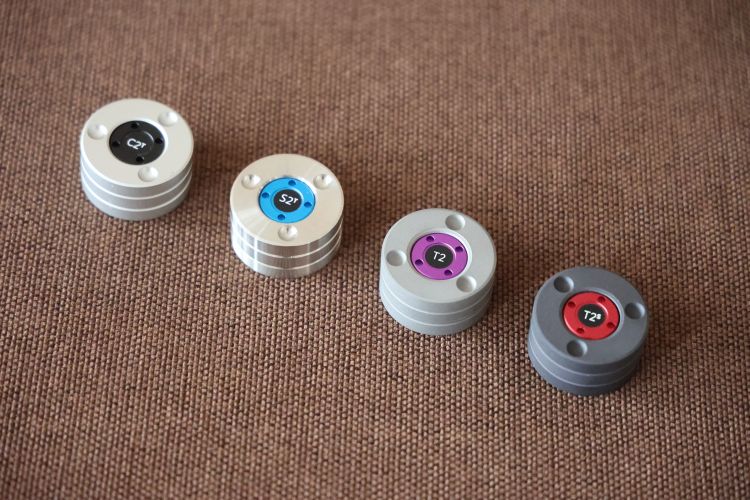
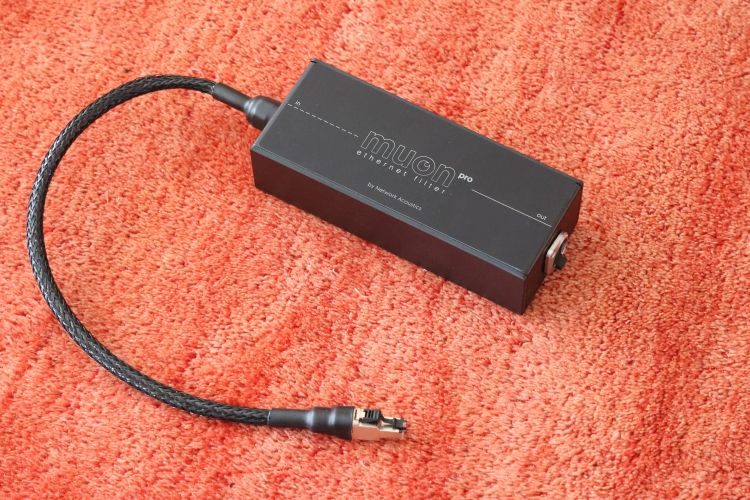
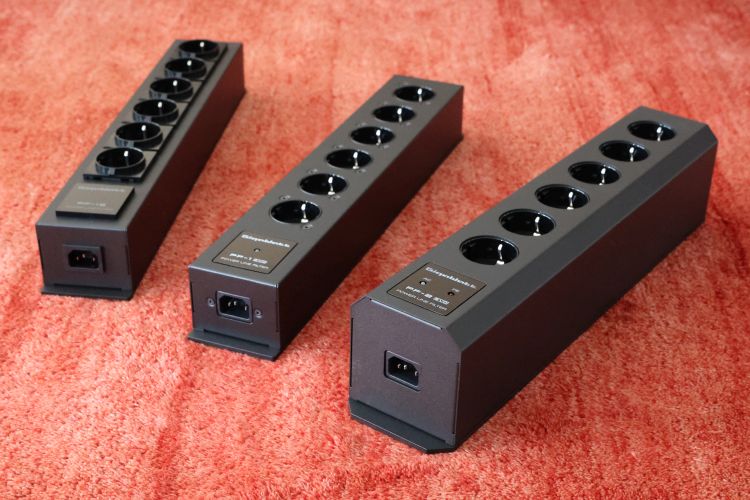
Christian,
Excellent and typically thorough review thank you. Also kudos to Ansuz for letting us look inside their devices. There’s been if not a flood at least a stream of Sparkz type devices on the market of late. I use two similar products myself Furutech NCF Clear, and High Fidelity MC-0.5. Similar in shape and application if not technology I should say.
I’ve never seen inside either one but I would very much agree they seem to give the music a more relaxed quality overall. The Ansuz products are intriguing I hope they find their way stateside.
Cheers,
Jon
Thanks Jon!
Hello Christiaan
Great review of Ansuz products….
Those Sortz and Sparkz have indeed lifted my system up to a new level. Because of reducing noise in the system, makes it play at it best. and adding even more of those makes it just better
All the best
Michael